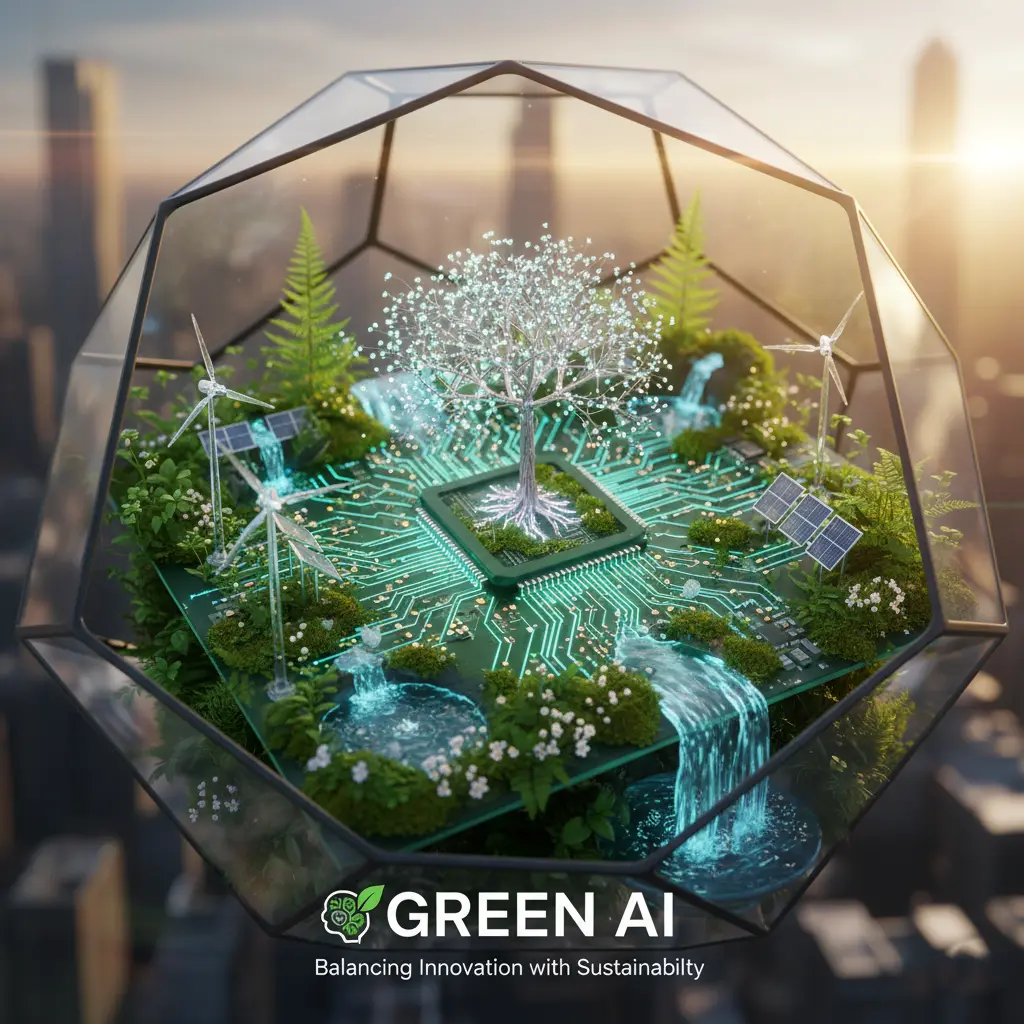Energy-Efficient Deep Learning (Green AI)
Artificial Intelligence has brought groundbreaking innovations, but behind these intelligent systems lies a growing challenge: energy consumption. The large deep learning models require huge computational power and thus they consume a lot of electricity and generate carbon emission. This fact has given birth to the concept of Green AI which is dedicated to creation of smarter models which are also environmental friendly.
The Hidden Cost of AI Training
GPT, GEMINI, and big image recognition systems models are based on deep learning, which needs thousands of GPUs or TPUs to execute in days or even weeks. This leads to massive energy consumption. University of Massachusetts Amherst study showed that the carbon dioxide emissions of just the training of one large NLP model can produce over 626,000 pounds of carbon dioxide (approximately five average cars in one lifetime).
Such numbers highlight the need for efficiency and sustainability in AI development. The objective is to develop models which perform at high level and have low environmental impact.
Measuring Energy and Environmental Impact
We must measure the impact of AI in order to make it sustainable. Several key metrics are used to assess how “green” an AI system is:
- Energy Usage (kWh): This is the total electricity that is used in training and deployment.
- Carbon Footprint (CO₂ equivalent): The amount of greenhouse gases released, depending on the energy source used.
- Compute Efficiency: How much computational work (FLOPs) is needed to achieve a specific level of accuracy.
These metrics help developers evaluate trade-offs between performance and environmental responsibility.
How to Make Deep Learning Energy-Efficient
1. Efficient Model Architectures
Smaller and optimized architectures like MobileNet, EfficientNet, and TinyBERT have proven that great performance does not always require massive models. They are very accurate and need less parameters and need low cost to compute hence they can be used in mobile devices and embedded systems.
2. Transfer Learning
Transfer learning allows the use of pre-trained models for new tasks instead of starting from scratch. This conserves time and energy since the model requires a fine-tuning as opposed to a full retraining process.
3. Model Distillation
Model distillation is a procedure through which a big model (denoted as teacher) transfers knowledge to a tiny one (denoted as student). The student learns to replicate the teacher’s behavior, achieving nearly the same performance while being lighter and faster.
4. Quantization and Pruning
Quantization reduces the precision of numbers used in a model (for example, from 32-bit to 8-bit), while pruning removes unnecessary connections. These techniques/methods consume less memory, are faster and consume less power without causing a significant impact on accuracy.
Tools for Tracking and Reducing Energy Impact
Developers can now use tools that help monitor and minimize the energy cost of AI training:
- CarbonTracker: Estimates the carbon footprint and energy used during model training.
- CodeCarbon: A lightweight library that automatically tracks emissions and helps compare model efficiency.
- Experiment Impact Tracker: Records energy consumption, hardware use, and emissions data to promote responsible experimentation.
These tools make it easier for AI professionals to design sustainable workflows and stay accountable.
The Future of Sustainable AI
As the AI community grows more conscious of its environmental impact, several promising trends are emerging:
- Green Data Centers: Companies are investing in data centers powered by renewable energy sources like solar and wind.
- Energy-Efficient Hardware: Processors such as Google’s TPUv4 and NVIDIA’s Grace Hopper are designed to deliver high performance while using less energy.
- Carbon Labels for AI Models: Similar to nutrition labels on food, future AI models might include a “carbon label” showing their training energy and emissions data.
These developments signal a shift in AI research and industry practices toward sustainable progress.
Conclusion
Energy-efficient deep learning, or Green AI, represents the future of responsible innovation. The goal is not only to build powerful models but to do so with respect for the planet. By adopting efficient architectures, using transfer learning, applying compression methods, and tracking carbon impact, organizations can significantly reduce the environmental footprint of their AI systems.
The smartest form of intelligence is one that balances innovation with sustainability, creating technology that benefits humanity while protecting the environment.









